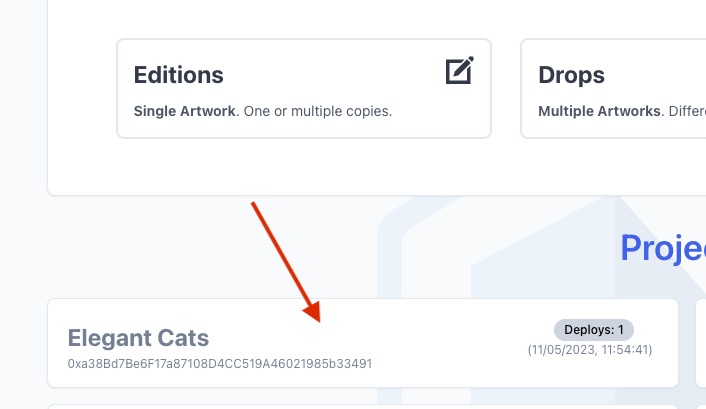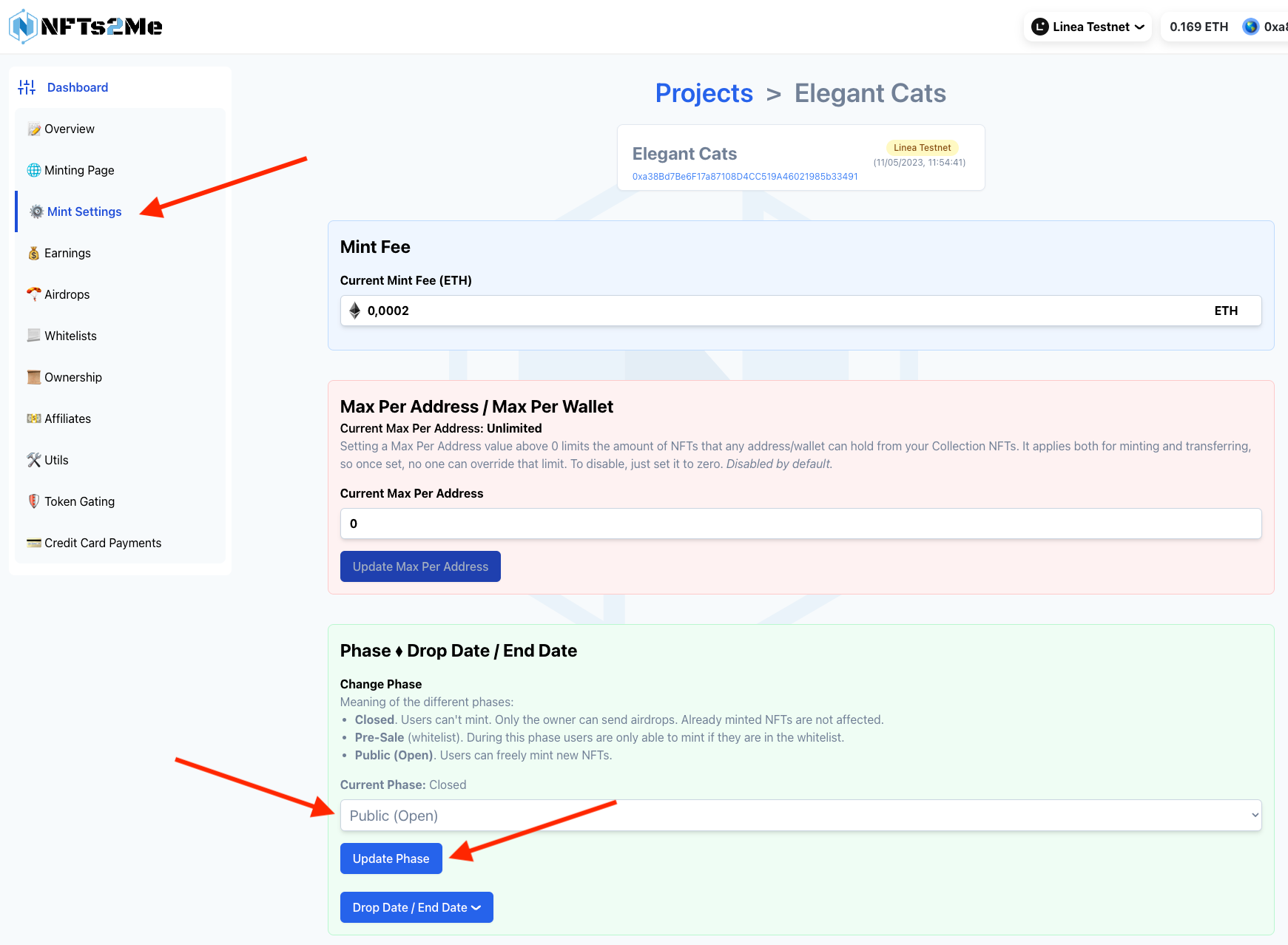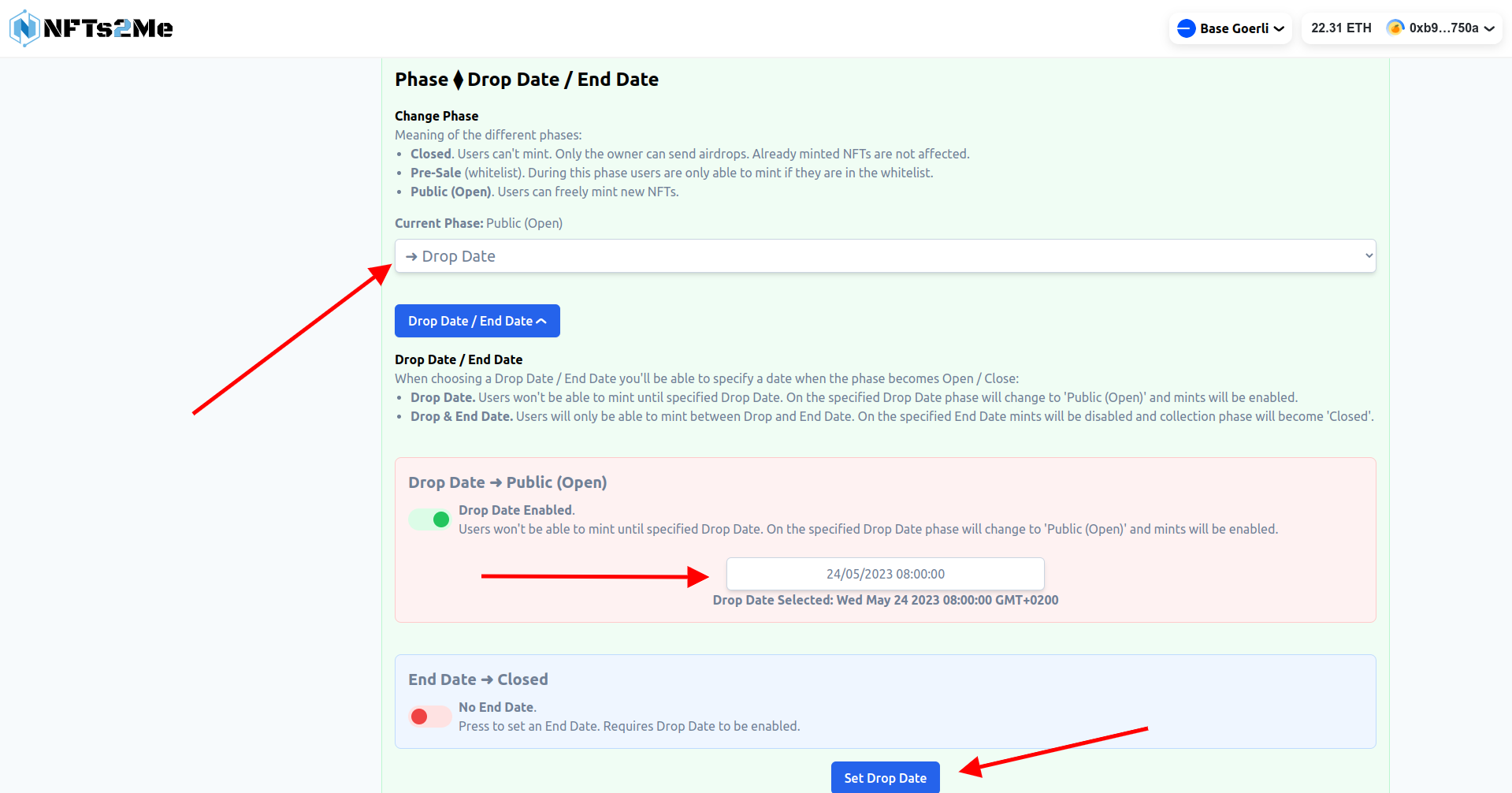Table of Contents
This article explores the importance of the transition between phases in an NFT project, from our tool we have differentiated 3 phases which are: Closed, Pre-sale (whitelist) and Public (open).
The Closed phase, which is the beginning of every new NFT project launched on our launchpad, users are unable to mint new tokens. However, the owner retains the ability to distribute airdrops to selected individuals, fostering commitment and appreciation among early adopters.
The Pre-sale (whitelist) phase marks a transition towards broader participation. During this phase, project owners curate a whitelist (there is a tool to upload a list of addresses at once to the whitelist via a CSV file) of individuals granted the privilege to mint NFTs before the project opens to the general public. This limited-access approach rewards dedicated supporters and fosters a strong community base, emphasizing ownership and exclusivity.
The Public (Open) phase represents the project’s evolution reaching its apex, enabling users from diverse backgrounds to freely mint new NFTs. This phase facilitates broad participation, encouraging creativity, exploration, and accessibility. It democratizes the NFT landscape, inviting new collectors and enthusiasts to join the community.

In addition to the three phases, we also have the option to indicate a drop date, an end date or set both to create an interval where only during this time it will be in public phase. When choosing a Drop Date / End Date you’ll be able to specify a date when the phase becomes Open / Close:
- Drop Date. Users won’t be able to mint until specified Drop Date. On the specified Drop Date phase will change to ‘Public (Open)’ and mints will be enabled.
- Drop & End Date. Users will only be able to mint between Drop and End Date. On the specified End Date mints will be disabled and collection phase will become ‘Closed’.
Access the project in the Dashboard
Go to the Dashboard, where you can see all your deployed projects. There, you can configure the Smart Contract, the minting page, withdraw earning, airdrop tokens, create whitelists, token gated content, affiliation or even enable Credit Card Payments for your collection (not available on testnet for obvious reasons 🙂).

New NFT Collections start in “Closed” minting phase. This initial phase serves as a security measure, allowing you to configure your project and prevent any unwanted minting before everything is set up correctly. During the “Closed” phase, only the project owner has the privilege to mint NFTs using the Airdrop tool, providing you with complete control over the token creation process.
Note: On the “Closed” phase only the project owner can mint NFTs using the Airdrop tool.
You can decide now to change the minting phase to ”Public” to “Presale” (only whitelisted users can mint) or set a specific “Drop Date” (users won’t be able to mint until the specified date).
Change to Public Phase
To transition from the “Closed” phase to the desired phase, you need to navigate to the Mint Settings tab within the Dashboard. Here, you can modify the minting phase by selecting “Public” or “Presale” and clicking the “Update” button. Once you initiate this change, an on-chain transaction will be sent to modify the contract state, granting users the ability to mint NFTs through your newly created NFT collection’s dedicated Minting Page.

This will send an on-chain transaction to change the contract state. It will allow users to mint NFTs from your newly created NFT collection using your new Minting Page.
To use the drop date in our project, it would be following the steps that can be seen in screenshot below.

By carefully managing the transition between phases, NFT projects can create a strong community base, foster appreciation, and ensure a successful and inclusive experience for all participants.

